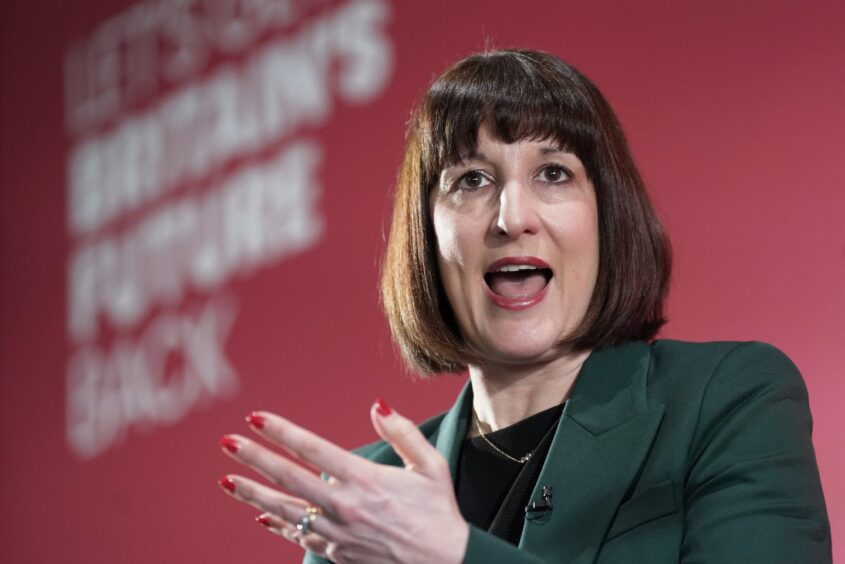
On the face of it, there is a paradox. Rachel Reeves has inherited a massive black hole in public spending. Large scale infrastructure projects are being cut, left, right and centre.
Yet at the same time, commitments are being made to the biggest infrastructure revolution in modern history involving a wholesale transition to renewable energy and re-wiring the country to accommodate generation in what were distant outposts.
It is a difficult circle to square and the obvious conclusion is that the public sector’s contribution can only be generated by thinking and reaching outside the box.
Investment must be secured that does not count as public expenditure, which is tricky but hopefully not impossible.
I have no difficulty believing Ms Reeves’ account of her economic inheritance from the Tories.
There is no way it is in the interests of a Labour government to find itself in the immediate position of having to cut anything to make the books balance; far less confront difficult political choices like limiting the Winter Fuel Payment.
The fact Ms Reeves has found it necessary to do so can only be due to the public finances being in a much worse state than was pretended prior to the general election – and that itself was a pretty grim prognosis.
So how will inconceivable billions for energy infrastructure be kept outside this dilemma?
Particularly in the north-east, the headline concern has lain in the increased windfall tax on oil and gas.
Even on an optimistic prognosis, that will bring in an additional £8.3 billion to fund Great British Energy; a relatively modest sum that will scarcely dent the estimated £100 billion that decarbonising the grid will, on its own, require.
Inevitably, the new government is looking for public-private partnerships and one of its earliest announcements involves the creation of a National Wealth Fund, with a heavy emphasis on decarbonisation.
This will bring together the UK Infrastructure Bank and the British Business Bank to create “a compelling proposition for investors, mobilise billions more in private investment and generate a return for taxpayers”.
Inevitably, a Task Force has been created to kickstart this work, chaired by Dr Rhian-Mari Thomas, who is chief executive of the Green Finance Institute.
Mark Carney, former Governor of the Bank of England, will be a member (unless he goes off to become Prime Minister of Canada) and he is encouragingly upbeat.
Mr Carney says “The new government has rightly identified infrastructure investment as a core enabler of building high value, low carbon competitive industries” while “the smart use of public investment via the National Wealth Fund can crowd in private capital to vital sectors including ports, heavy industry and manufacturing”. I like the sound of that.
Then we come to the Crown Estate and I find the role of that curious animal intriguing.
The King’s Speech promised flexibility in its ability to borrow and invest. Since it leases the seabed, the Crown Estate has its own interest in seeing projects come to fruition so investment in infrastructure has a clear rationale.
In Scotland, there has been a deafening silence on this option, thanks to the mysteries of devolution.
When the Crown Estate was devolved in 2016, it became in effect a wing of the Scottish Government with none of the independence which pertains to England and Wales.
Urgent clarification is required on whether Crown Estate Scotland will be able to borrow and invest in the same way as its long-established forebear which deals with the English and Welsh coastlines and seabeds.
Investment is required disproportionately in Scotland, not just to get power to markets in the south but also to ensure the potential really for securing economic and employment benefits is not squandered. The jury is still definitely out on that one.
It is obviously critical for the UK and Scottish Governments to work together to create one coherent plan and a clear picture of how it will be funded.
It remains to be seen if the SNP is sufficiently chastened by the General Election outcome to accept that reality, in deed as well as in word.
Particularly given constraints elsewhere in public spending, the energy transition really does represent the most positive prospect on the agenda, not just in environmental terms but to create employment and supply chain benefits. But will it happen?
I warmly welcome the appointment of a Scottish Labour MP, Michael Shanks, as Energy Minister overseeing the net zero agenda, and also that of Chris Stark to “to head a new Mission Control tasked with turbocharging UK to clean power by 2030”. Strange title but important job!
Until recently Mr Stark was chief executive of the Climate Change Committee who, in his parting shot, warned against the uselessness of targets which are incapable of being fulfilled.
I hope he brings the same common sense into his new role, even if it annoys his political masters.
It is the direction of travel that matters, at as fast a pace as is practical. Both in Scotland and the UK as a whole, we need a far more reliable route map than currently exists.
Part of that challenge lies in knowing where the money is going to come from to bring the transition to fruition.
The new government has made a good start with some coherent thinking rather than simply “leaving it to the market” which might or might not have chosen to deliver.
Now come the difficult bits – called delivery!
